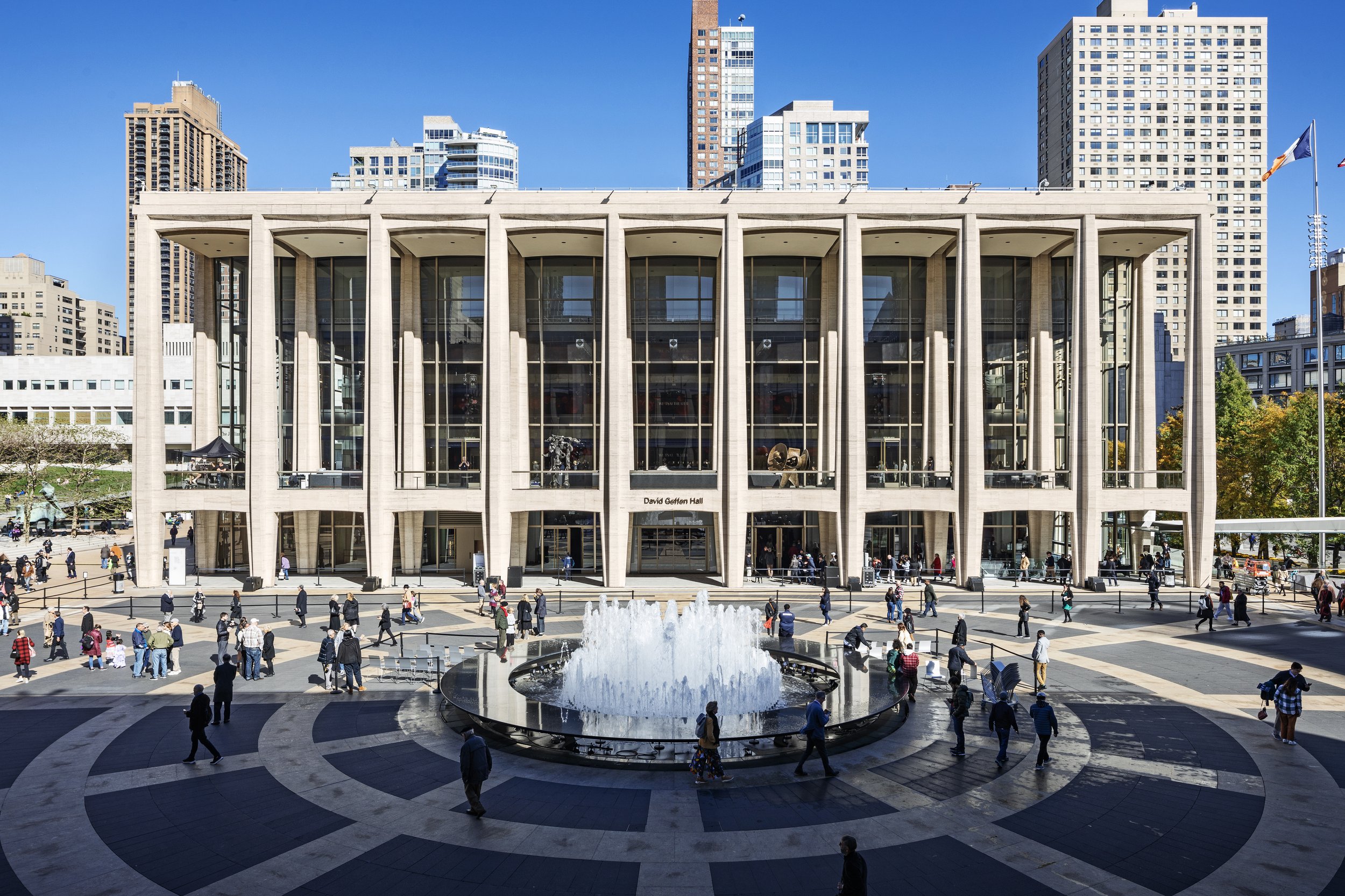The Absence of Orpheus and Apollo at Lincoln Center
David Geffen Hall Exterior ©Michael Moran
Richard Lippold (1915–2002), Orpheus and Apollo (1962). Muntz metal and steel wire. Photo credit: Edward Crimmins. Copyright © by Edward Crimmins.
In 2020, the League included Richard Lippold’s monumental Orpheus and Apollo on our Seven to Save list of endangered historic sites. The para-architectural installation was the first major piece created specifically for Lincoln Center, a piece of public art that was a key feature of the Philharmonic Hall. The sculpture was dismantled and removed from Avery Fisher/David Geffen Hall in 2014, in what Lincoln Center said at the time would be a temporary move while renovations were underway. By 2020 there were still no plans to reinstall Orpheus and Apollo.
Working closely with our colleagues at Landmark West!, the League drew attention to the plight of Orpheus and Apollo, strongly urging Lincoln Center to reunite the installation with the architecture it was designed for. Despite this advocacy and public outcry, the newly refurbished David Geffen Hall opened its doors in the fall of 2021 without Richard Lippold’s iconic sculpture. Despite this loss there is still hope for Orpheus and Apollo — plans are in motion to bring the installation to the revitalized LaGuardia Airport.
But as pointed out in the recent Hudson Review article by Joseph Giovannini, “The Phil’s loss may be LaGuardia’s gain, but it is still the Phil’s loss: they should never have left.” The League agrees, and we were thrilled to read Giovannini’s analysis of the Philharmonic redesign, which prominently notes removal of Orpheus and Apollo. He continues,
“…The pieces that were conceived for the Phil lose their meaning when transported to another space, especially since Lippold is no longer alive to hang them. Lippold installed his works piece by piece from hanging threads of metal attached to new wood ceiling stanchions of his design, moving up and down ladders to execute the details from his own, precisely hand-drawn drawings. His works are not so much about the individual strips of metal, but rather how he positioned them to relate and capture the magic of space and light.
What had been a well-coordinated interior that merged and reconciled the classical ideal of measured clarity and the Modernist idea of transparency became trivialized by a series of aesthetically arbitrary moves missing an underlying philosophy. The architects did in fact go back to where Abramovitz had already been, the classical world, but they drew different lessons, finding anecdotes instead of a holistic vision. The once iconic interior, infused with a sense of civic grandeur, is now just plain middlebrow, no longer idealistic, no longer aspirational, no longer spatially limpid: AM, not classical FM.”
You can read the full article, “Geffen Hall: The Wrong Note,” on the Hudson Review’s website.

